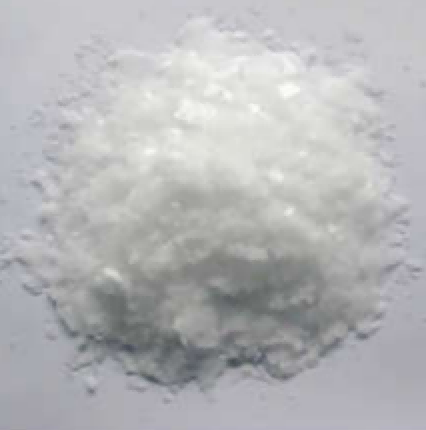1. Introduction
In the past 48 hours, a viral TikTok trend has reignited public concern over ‘sulfate-free’ beauty products, with influencers urging followers to ditch shampoos containing sodium lauryl sulfate (SLS) due to alleged skin irritation risks. While the debate isn’t new, the surge in online chatter highlights a growing consumer demand for transparency about common cosmetic ingredients. This renewed attention makes it the perfect time to take a deep, science-backed look at sodium lauryl sulfate—what it is, why it’s used, and whether the concerns are justified.

2. What Is Sodium Lauryl Sulfate?
Sodium lauryl sulfate (SLS), also known as sodium dodecyl sulfate or natrium lauryl sulfate, is a synthetic anionic surfactant. The term ‘surfactant’—short for ‘surface-active agent’—refers to compounds that lower surface tension between liquids or between a liquid and a solid. In simpler terms, surfactants help water mix with oil and dirt so they can be rinsed away. SLS is particularly effective at this, which is why it’s a staple in everything from toothpaste and shampoo to industrial cleaners.
Chemically, SLS is derived from lauryl alcohol (also called dodecyl alcohol) and sulfuric acid, followed by neutralization with sodium hydroxide. Its molecular structure features a hydrophobic tail and a hydrophilic head, allowing it to interact with both oil and water—a hallmark of all surfactants. You might also see it labeled as ‘sls sodium lauryl sulfate,’ ‘na lauryl sulfate,’ or simply ‘lauryl sulfate’ on ingredient lists.
3. How SLS Works as a Surfactant
The meaning of surfactant lies in its dual nature: one end loves water (hydrophilic), and the other repels it but attracts oil (hydrophobic). When you lather up with a product containing SLS, these molecules surround grease and grime, forming structures called micelles that trap the dirt and allow it to be washed away. This action also creates the rich foam many consumers associate with ‘cleaning power,’ even though foam isn’t necessary for effectiveness.

SLS is classified as an anionic surfactant because it carries a negative charge in solution. This contrasts with cationic surfactants (positively charged, like cetyl trimethyl ammonium bromide or CTAB), non-ionic surfactants (no charge, such as polysorbate 80, Span80, or Pluronic 127), and amphoteric surfactants (which can switch charge depending on pH, like cocamidopropyl betaine—also called coco betaine, amidopropyl betaine, or coco amido propyl betaine).
4. Common Uses of SLS Beyond Personal Care
While most people encounter SLS in shampoos, body washes, and toothpastes, its applications extend far beyond the bathroom. In agriculture, surfactants like SLS are sometimes used as wetting agents for herbicides—helping weed killers stick to and penetrate waxy plant leaves. Products labeled as ‘lawn wetting agent’ or ‘wetting agent for grass’ may contain SLS or similar compounds like lignin sulfonate or ethoxylated alcohols.
Industrial formulations also use SLS as a detergent, emulsifier, or foaming agent. You’ll find related compounds such as ammonium lauryl sulfate (also called ammonium dodecyl sulfate or ammonium lauryl sulphate), sodium lauryl ether sulfate (SLES)—often listed as sodium laureth sulfate, sodium lauryl ether sulphate, or laureth sulphate—and sodium dodecylbenzene sulfonate in heavy-duty cleaners. Notably, ‘sodium lauryl ether sulphate in shampoo’ is far more common than pure SLS because it’s milder.
5. Safety Concerns and Misconceptions

SLS has been the subject of controversy, often confused with sodium laureth sulfate (SLES). While both are anionic surfactants, SLES is ethoxylated, making it less irritating. SLS, by contrast, can cause skin and eye irritation at high concentrations—especially in leave-on products. However, regulatory bodies like the FDA and EU Cosmetic Regulation deem it safe in rinse-off products at typical usage levels (usually 1–15%).
It’s worth noting that ‘sls sulfate’ or ‘sls sodium’ are informal terms that can cause confusion. Also, claims linking SLS to cancer are not supported by scientific evidence. That said, individuals with sensitive skin or conditions like eczema may prefer gentler alternatives.
6. Popular SLS Alternatives
As demand for milder, more eco-friendly options grows, formulators are turning to alternatives like:
- Alkyl polyglucoside (e.g., decyl glucoside, coco glucoside): non-ionic, biodegradable bio surfactants derived from sugar and coconut oil.
- Cocamidopropyl betaine: an amphoteric surfactant that boosts foam and reduces irritation from anionic surfactants.
- Sodium cocoyl isethionate and sodium lauroyl methyl isethionate: ultra-mild anionic surfactants often used in ‘syndet’ bars.
- Sodium coco sulfate (sometimes called coco sodium sulfate): a slightly milder cousin of SLS, still anionic but derived from coconut oil.
- Sodium lauroyl sarcosinate and sodium cocoyl glutamate: amino acid-based surfactants known for gentle cleansing.
Other niche options include sodium deoxycholate, sodium oleate, and fluoro surfactants for specialized applications. For herbicide use, methylated seed oil or nonionic surfactants like ethoxylated alcohols are often preferred over SLS due to better compatibility.
7. Where to Buy and Industry Context
For manufacturers or DIY formulators, ‘sodium lauryl sulfate for sale’ is widely available from chemical suppliers. Companies like Rohit Surfactants Private Limited cater to bulk buyers in cosmetics, pharma, and agrochemical sectors. Whether you’re formulating a shampoo or a weed killer, understanding the difference between anionic, cationic, non-ionic, and amphoteric surfactants is key to choosing the right ingredient.
8. Conclusion
Sodium lauryl sulfate remains one of the most effective and economical surfactants available, but it’s not without drawbacks—primarily its potential for irritation. Thanks to advances in green chemistry, consumers now have access to a wide range of gentler, sustainable alternatives like alkyl polyglucosides and amino acid-based surfactants. Whether you’re reading a shampoo label or mixing a herbicide, knowing the role and type of surfactant helps you make smarter, safer choices.
Our Website founded on October 17, 2012, is a high-tech enterprise committed to the research and development, production, processing, sales and technical services of ceramic relative materials such as Understand. Our products includes but not limited to Boron Carbide Ceramic Products, Boron Nitride Ceramic Products, Silicon Carbide Ceramic Products, Silicon Nitride Ceramic Products, Zirconium Dioxide Ceramic Products, etc. If you are interested, please feel free to contact us.


